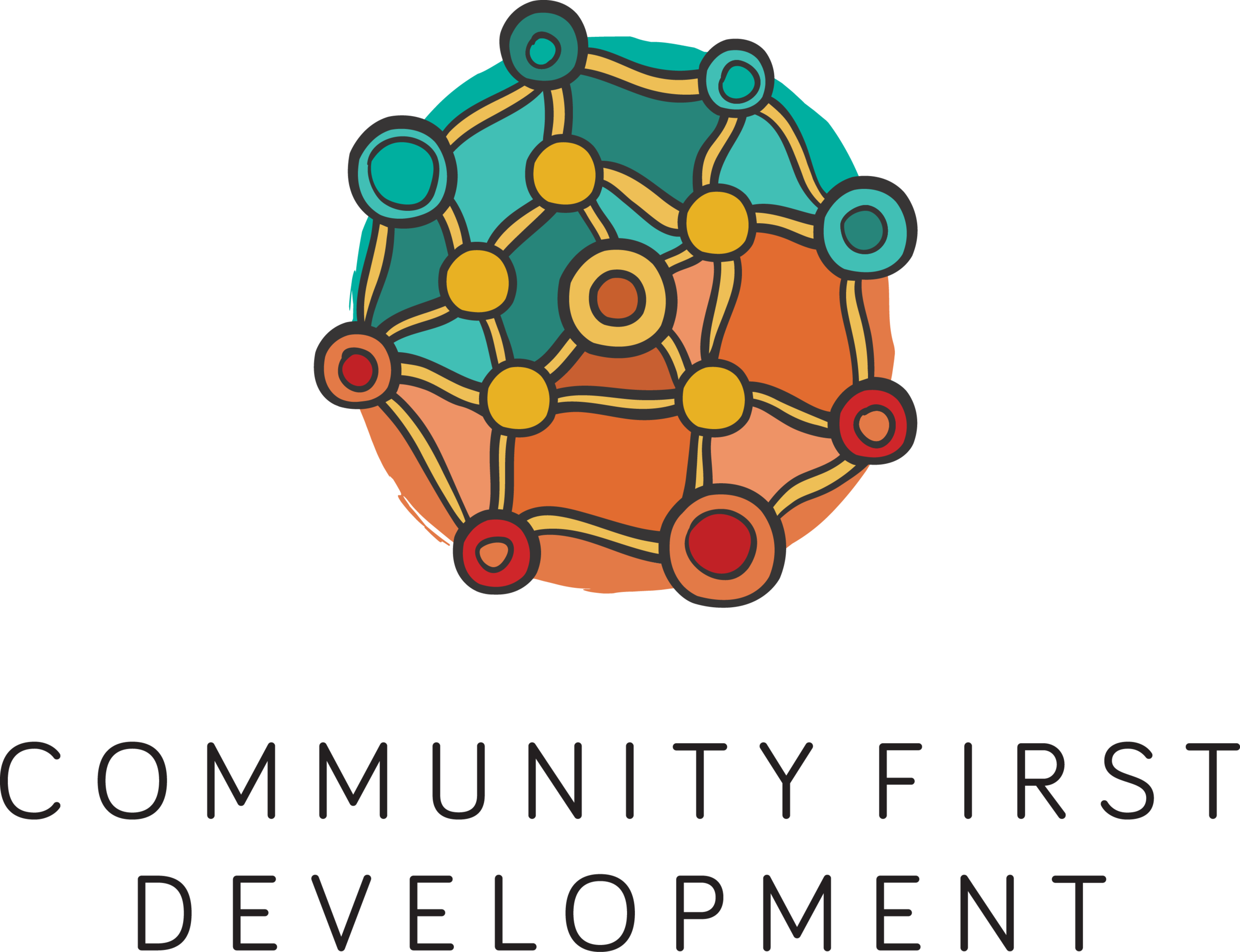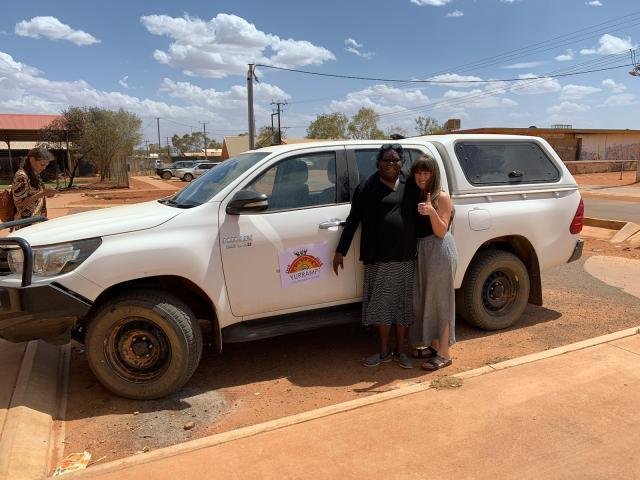YURRAMPI, WARLPIRI LED & CULTURALLY SAFE: GROWING CHILDREN UP STRONG (NT)
Volunteer Marion with the women from the reference group working together.
THE YURRAMPI CHILD AND FAMILY CENTRE INVOLVE THE WHOLE COMMUNITY IN THEIR REBRANDING PROJECT.
YUENDUMU, NT
Yurrampi Child and Family Centre (CFC) is located in the thriving remote community of Yuendumu, approximately 290km northwest of Alice Springs in the Northern Territory. They connect services, programs and cultural initiatives for young children, ensuring an integrated and holistic experience for children and their parents. The CFC is led by a Reference Group – Malpa Jungu Jintangka - comprising strong Yapa (Warlpiri) women who provide direction and advise on the best ways to ‘grow children up strong.’
While the CFC is officially led by the Department of Education, the Reference Group drives direction and plays a critical role in creating a culturally safe, self-determined early learning and childhood development space.
The Reference Group requested Community First Development’s support to develop branding that clearly established the centre as Warlpiri-led.
A winning artwork
The Reference Group ran an art competition in search of the right artwork to inspire the new brand and logo. The CFC then selected a volunteer to work with them to adapt the artwork into branding.
The volunteer worked collaboratively with the Reference Group and Jason, a young Warlpiri artist and graphic designer in community, to digitise the artwork. They created logos, branded templates, icons, and other promotional materials.
The new logo printed on a rug in the centre.
Marion also worked with Warlpiri educators, Ormay and Barbra, to digitise icons for each stage of the Warlpiri Theme Cycle intended to keep culture strong and promote two-way learning.[1] The icons form part of a broader plan to improve access to digital learning.
“We just had words before. One Kardiya (non-Indigenous person) fella made some years ago, but he didn’t talk to us, and the pictures he came up with were not appropriate. Working with [CFD] was different. We did it together. It’s really good that you helped us – now we can look back on each theme and the pictures of each theme have meaning, and are connected to what we are teaching.” - Ormay – BRDU Warlpiri Literacy Worker
The CFC car, now branded with the new logo, receives a warm welcome when it visits families.
Progress has been significant. The logo is complete and the CFC has a digitised version now printed in a range of formats to suit different purposes. The longer-term impacts of the project are starting to be realised. Widespread recognition of the logo is resulting in community ownership, pride for Warlpiri leadership, and greater respect for the place and people working there.
For us, seeing the new colours is a highlight for us. The logo now represents the community, the community can recognise the building and know who works there. - CFC Reference Group
The Reference Group have been taking more and more ownership of this building and the programs that are within it. And the FAFT mums are feeling like they have a voice in their program as well, so I think the CFC is being viewed more as a community owned and run space. Because the logo, and of all this, it now has that Warlpiri Identity, we haven’t had any break ins in a really long time. So, I think it’s been a build up of all these things. - Rebecca Toll, CFC Manager
Kurdungurlu governance to safeguard children, families and culture
The Marlpa Jungu Jintangka have now shared aspirations to formalise their Warlpiri governance structure. The group identify themselves as kurdungurlu[2] or “guardians” of young Warlpiri children in Yuendumu, a traditional role of female Elders in the community.
By documenting their governance structures in a Warlpiri way they seek to highlight the cultural relevance of the selected members and better enable them to speak on behalf of the full community. Creating a complimentary English version of the document would enable other organisations to work with the Marlpa Jungu Jintangka. This will enhance their ability to safeguard children, families and culture and provide direction to Early Years programs in Yuendumu.
The project provides a good example of how the process of community development can improve structures to strengthen community ownership. Kenny describes community development as an approach that aims “to enable communities to have effective control of their own destinies. Effective control requires the development of ongoing structures and processes by which communities can identify and address their own issues, needs and problems within their own terms of reference”.[3]
We hope you enjoyed reading this story.
To support communities like this,
[1] Disbray S., Martin B. (2018) Curriculum as Knowledge System: The Warlpiri Theme Cycle. In Wigglesworth G., Simpson J., Vaughan J. (Eds.), Language Practices of Indigenous Children and Youth. Palgrave Studies in Minority Languages and Communities. London: Palgrave Macmillan.
[2] Kurdungurlu is a Warlpiri term that can be roughly translated as “guardian” or “manager” and originates from the concept of kurdungurlu and kirda ‘traditional owner’ as their roles and responsibilities in relation to jukurrpa.
[3] Kenny, S. (2006) Developing communities for the future, Third Edition , Thompson, South Melbourne as cited in Campbell, D. and Hunt, J. (2010) Community Development In Central Australia: Broadening the Benefits from Land Use Agreements, CAEPR Topical Issue, 7: https://www.clc.org.au/files/pdf/Paper_Broadening_the_benefits_of_Land_Use_Agreements.pdf.





